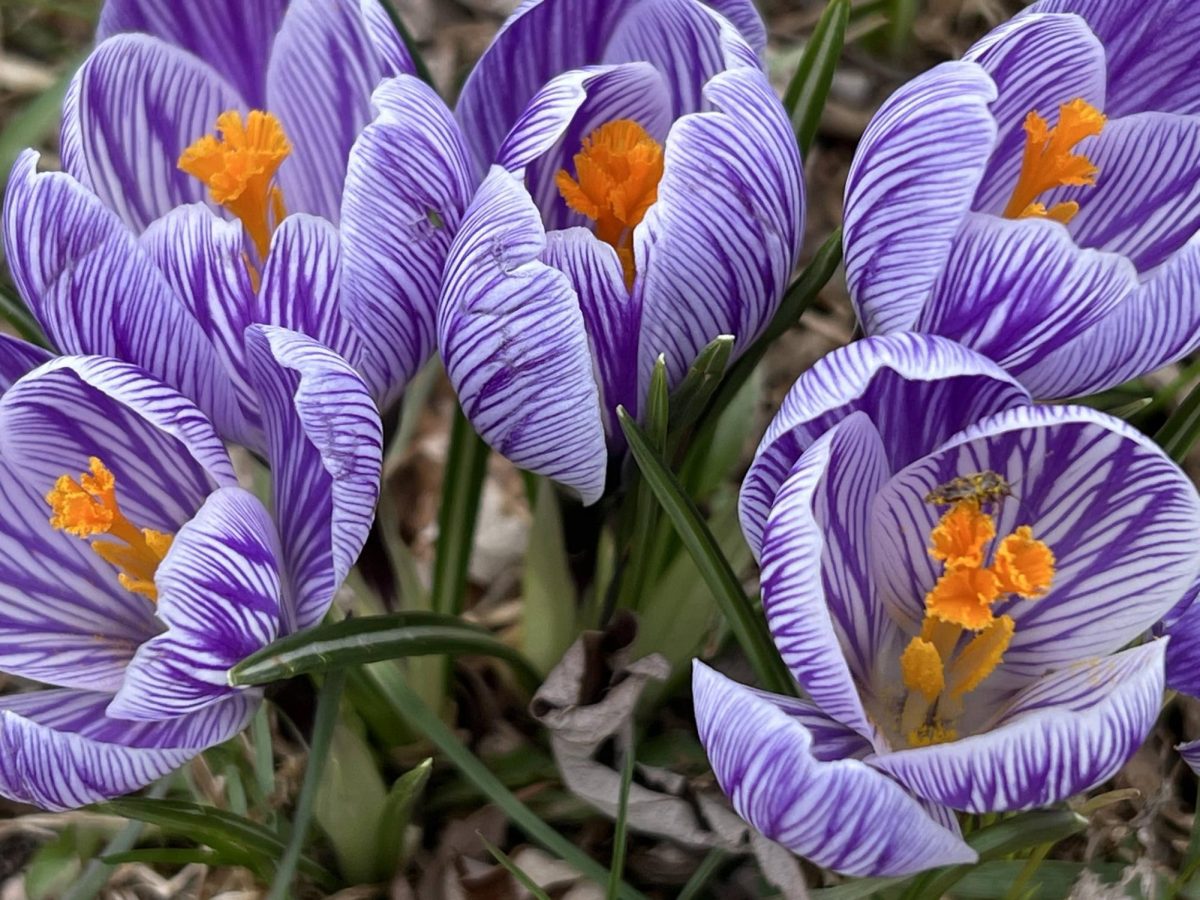One certainty that I have learned over my long years is that nature moves at her own pace.
Yes, we’ve done our worst to mess with the climate and destroy ozone, but nature slowly responds to the changes. Even though we’ve had spring-like weather for much of this winter, there are still nature’s harbingers that tell us that true spring has arrived.
Perhaps it was appropriate that we had an early Easter this year. Nature marked this holy day in her own way as d
ozens of crocuses displayed their delicate blossoms in our yard.
Crocus are remarkable flowers – they are nyctinastic – closing their flowers at night and opening them during the day. These early bloomers emerge from bulb-like structures called corms. They can bloom for up to three weeks and can live up to five years. They also spread, so a patch of crocuses can last for years as new plants form.
That’s certainly the case of a crocus circle that’s popped up in the yard for many years. The c
ircle was planted by my mother, who hated the long winters. After the blooms faded and the green shoots yellowed, Dad would mow the plants down. They rested and rejuvenated over the fall and winter and resumed their spring show.
Spring crocuses have a symbolic meaning, representing rebirth, joy, hope, and fresh beginnings. In classical mythology, Crocus was a mortal youth who was changed by the gods into a saffron flower.

According to atozflowers.com, one legend says Crocus was a young man who fell in love with a nymph called Smilax. The gods were so pleased with his love and devotion that they granted him immortality and turned him into the plant of the same name. Smilax was given a similar fate and turned into bindweed so that the two lovers could be together forever.
Any gardener who has to deal with bindweed knows how intertwined their fates were.
Another legend states that Crocus was a mortal companion of the god Hermes. Crocus and Hermes were playing a game of discus and Hermes accidentally hit and killed his friend. A distraught Hermes turned the mortal Crocus’s body into a flower. The first crocus gre
w at the spot where he died, symbolizing rebirth and renewal of the body and spirit.
Today saffron is a spice derived from the crocus sativus flower – primarily grown in the Middle East. Saffron threads are the stamens of the flower and it takes more than 50,000 flowers to produce one pound of saffron, which can cost more than $5,000.
Sounds like a lot of work, but certainly more profitable than my attempts at farming.
The sun was shining and the birds were singing as I took some photos of the crocuses on Easter afternoon. Spring burst forth.
I breathed in the hope of fresh beginnings.
Chris Hardie spent more than 30 years as a reporter, editor and publisher. He was nominated for a Pulitzer Prize and won dozens of state and national journalism awards. He is a former president of the Wisconsin Newspaper Association. Contact him at chardie19
Photos: Three photos of crocuses in Chris Hardie’s yard. Some of them were planted years ago by his mother.











